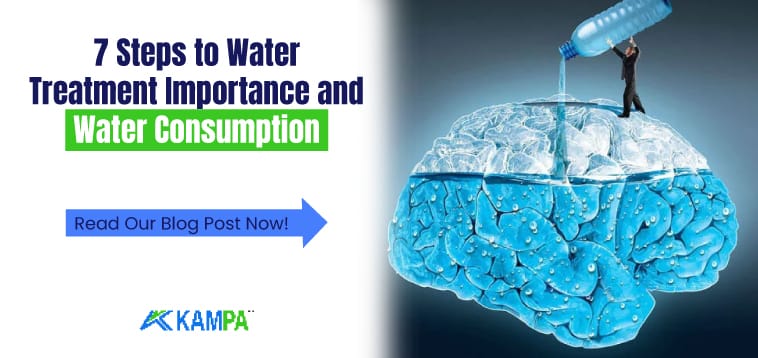7 Steps to Water Treatment Importance and Water Consumption
Water treatment is as important as water. It is essential for the survival of all living things on earth. The human body is 70% water and we lose enormous amounts of water every day, so water consumption is emphasized.
Table of Contents
The body needs to maintain its water levels and for this reason, doctors recommend that individuals drink about eight glasses of water a day. However, the water consumed should be clean and purified.
Dirty water can cause diseases and that is why water purification systems are vital. In our previous blog post, we briefly talked about water purification methods, now we have examined the water purification method in 7 steps for you.
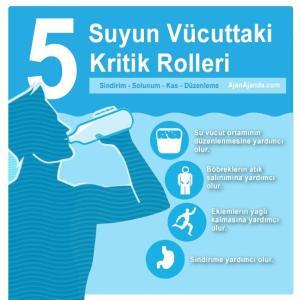
1.Ion Exchange and Coagulation
Raw water is first collected for water treatment in a large aeration tank and the water is removed by passing pressurized air bubbles through perforated pipes.
Ventilation removes bad odors and CO2. It also removes metals such as iron and manganese by precipitating them as hydroxides.
The aerated water is then placed in the settling tank and stored for 10-14 days.
Approximately 90% of the solids suspended during storage settle out within 24 hours and the water becomes clear.
Pathogenic bacteria gradually die and in the first 5-7 days of storage the number of bacteria is reduced by 90%.
During storage, organic matter present in water is oxidized by microorganisms. Similarly, available NH3 is oxidized into nitrate by microorganisms during storage.
In water purification,this is the first step in the purification process. The mains water coming into the city is contaminated with unwanted minerals and this step helps to remove the minerals that form hard water.
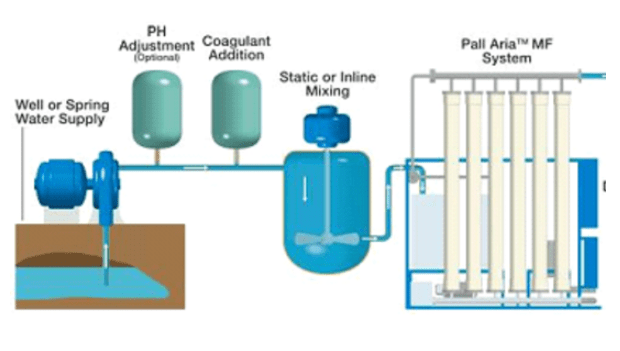
2nd Water Treatment Step Sedimentation
After the first step, the pellet and the water go through the sedimentation process. When the water settles, the pellet moves downwards and settles there. There are also sediment filters that trap dirt particles. This helps to prevent contamination of the equipment.
Then water from the storage tank is placed in the coagulation tank and some precipitants such as lime etc. are added to the water and mixed.
These precipitants form Al(OH)3 precipitate when dissolved in water.
The suspended solids absorb the surface of the precipitate, so gradually the mass of the precipitate becomes heavier and eventually precipitates.
Filtration and Granular Activated Carbon3. Filtration and Granular Activated Carbon
Here the water is filtered and passed through sand, coal and other layers. The particles remaining after sedimentation are then removed. A carbon filtration process is also involved and herbicides, chlorine and other pollutants are removed.
Partially purified water is passed through the sand filter, which removes 98-99% of microorganisms and other impurities.
Sand gravity water filter:
The sand filter is a rectangular tank in which the filter bed is made up to 3 layers.
Top layer: 1 meter thick fine layer
Middle layer: 0.3-0.5 meter thick coarse sand layer
Bottom layer: 0.3-0.5 meter thick gravel layer
There is a collection tank at the bottom of the filter bed to collect the filtered water. During filtration for water purification, the filter bed is soon covered with a slimy layer called the vital layer.
The vital layer consists of threads such as algae, diatoms and bacteria.
During filtration the microorganisms in the vital layer oxidize organic and other substances present in the water. For example, if NH3 is present, it is oxidized into nitrate.
The vital layer also helps in the filtration of microbial cells.
If the water contains an unpleasant odor, activated carbon is put in the filter bed, which removes bad odors during water treatment.
4th Water Treatment Step: Disinfection
At this stage, the water is moved to a closed tank with ultraviolet lights, a sterilizing agent.
Filtered water is eventually treated using disinfectants. For example. Chlorination
The disinfectant kills pathogenic and other microorganisms in the water.
After disinfection, the water is then pumped into the upper tank for domestic distribution.
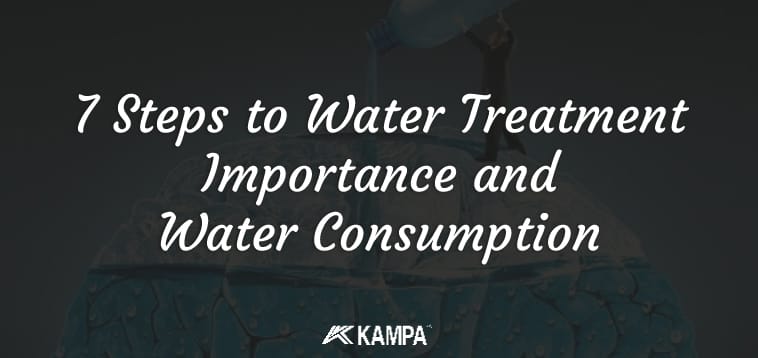
5. Carbon Filters
Carbon filters are a filtration method that uses a bed of activated carbon in water treatment to remove contaminants and impurities using chemical adsorption.
Activated carbon filters are small pieces of highly porous treated carbon in granular or block form. It is a filtration method that makes activated carbon filters very effective at adsorbing (essentially removing) contaminants and other substances.
Activated carbon filters range from about 50 microns to 0.5 microns. The smaller it is, the more effective it is at purifying water,but small pores can also reduce water flow.
As water flows through activated carbon filters, chemicals adhere to the carbon, resulting in a purer water output. Effectiveness depends on the flow and temperature of the water. This is why most small activated carbon filters should be used with low pressure and cold water.
According to the EPA(Environmental Protection Agency in the USA), Activated Carbon is the only filter recommended for water treatment to filter out all 32 identified organic pollutants, including THMs (by-products from chlorine). The same applies to the 14 pesticides and 12 herbicides listed.
6. Reverse Osmosis
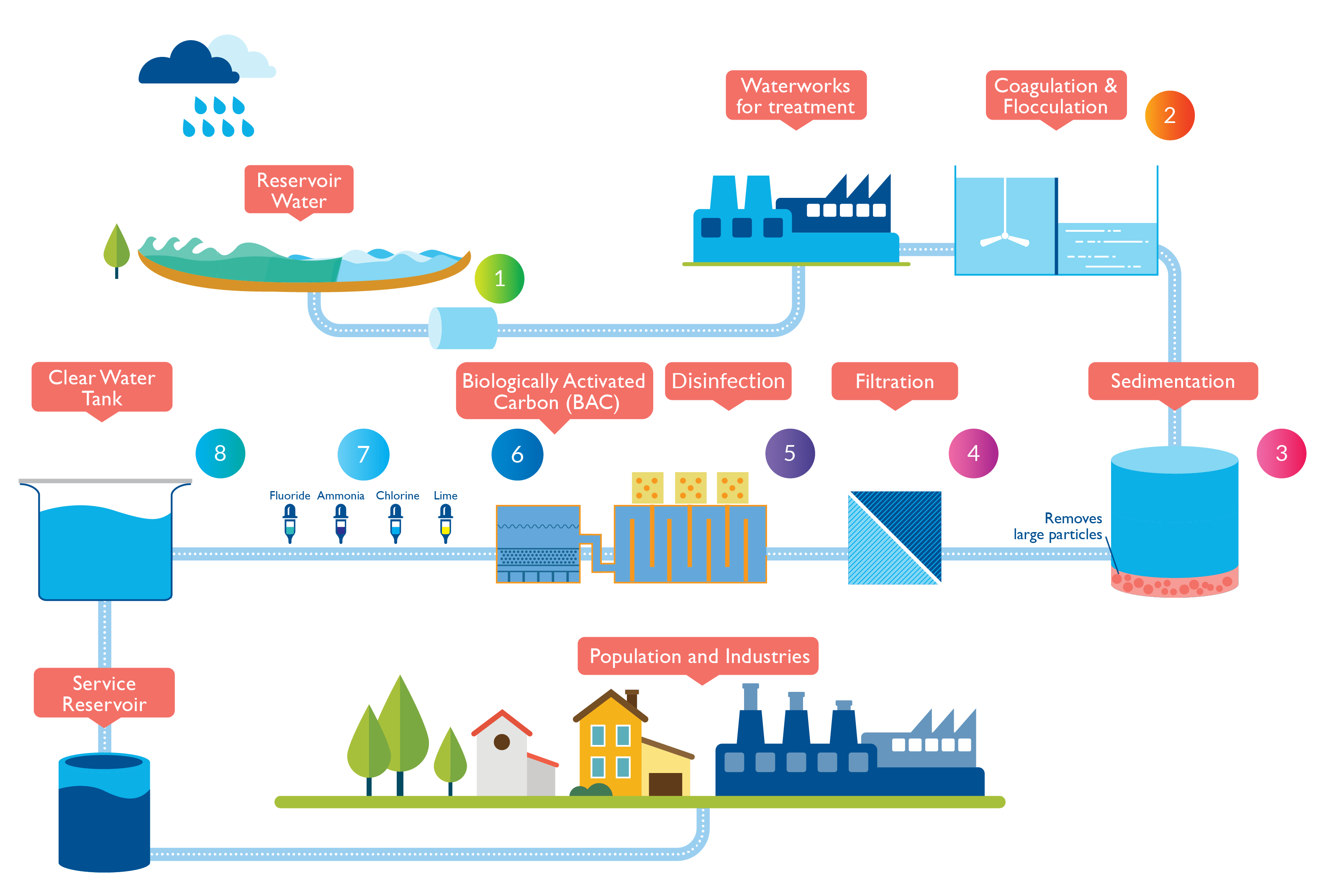
Reverse Osmosis (RO) is a water treatment technology that uses a semi-permeable membrane to remove ions, molecules and larger particles from drinking water.
When water reaches households, it has to go through a reverse osmosis process. Water purification uses a semi-permeable membrane to remove impurities from the water. All dissolved contaminants that may have been missed in the previous stages are removed here. In addition, a sweet flavor is added to the water at this stage.
Tank 7 Purified Water
Clean water, after the above processes, is stored in tanks for water purification. And it is distributed to homes and workplaces.
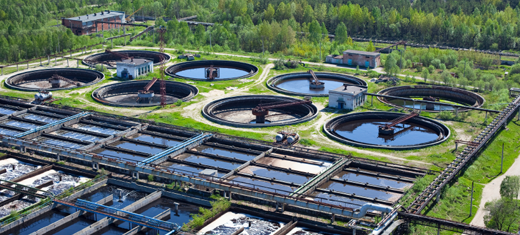
We have explained the water treatment process until the water reaches your taps from the river. However, it must be filtered before it is used for reasons such as pollution in pipelines, the time it takes until the water is purified and consumed.
Household water purification equipment As you will increase the quality of water with you will make healthy consumption. In big cities, especially in drinking water carboy is used. However, according to recent research, it has been confirmed by test reports that carboys are also unhealthy.
In addition, even if the cost of carboys seems low, your costs increase when you calculate the use of carboys for many years. The cost you will pay for a one-time water purifier will make you a profit in the long run.
Another issue is that we do not only use water for drinking. We use it for vegetables, fruits, dishes, laundry and personal hygiene.
When we consider all these areas of use, we can increase the quality of the water a little more by using small water filters that we will attach to the faucets. There are specially produced filters for washing machines and dishwashers.
It should not be forgotten that “There is no greater wealth than health!”

